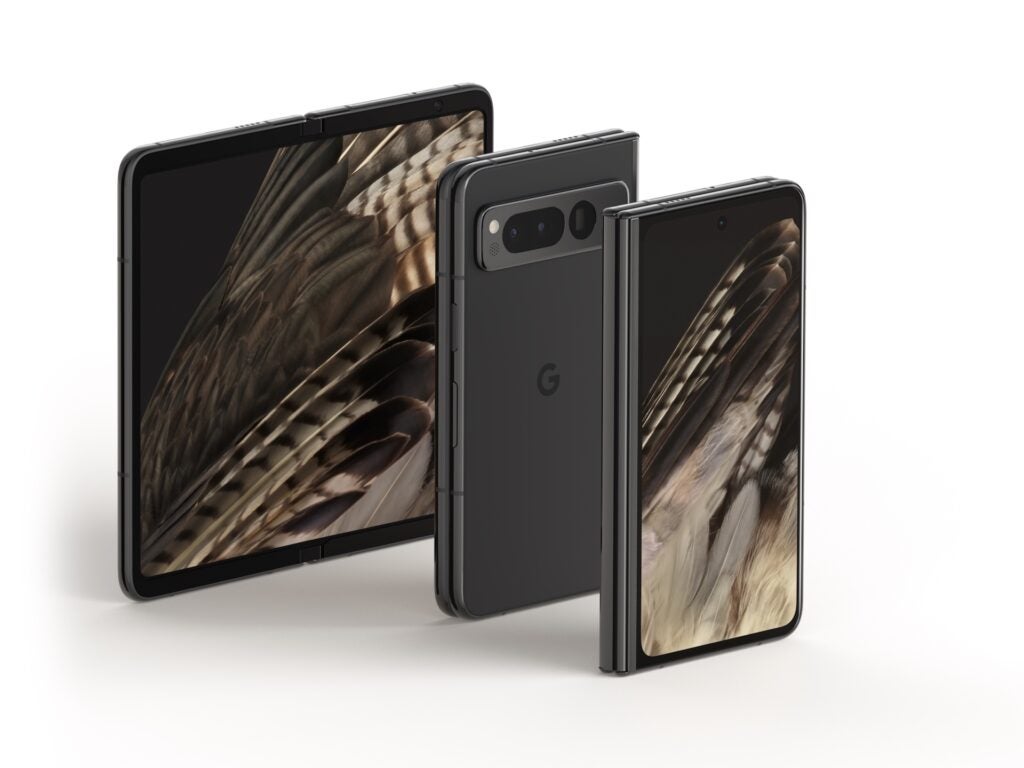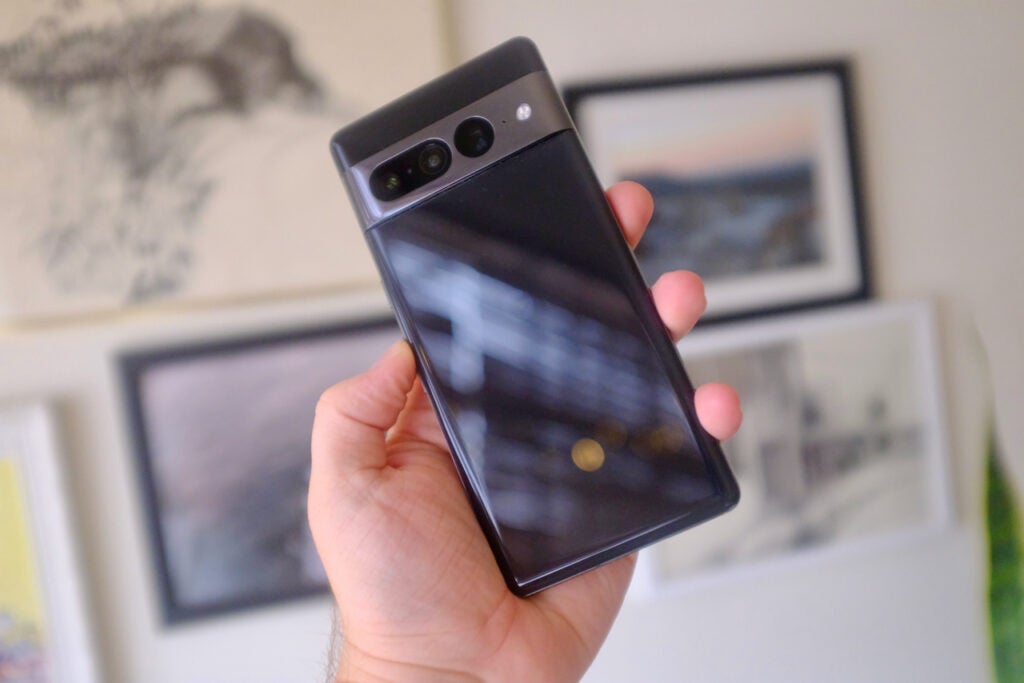The Google Pixel Fold is the pinnacle of Google’s hardware design, offering a foldable design that looks to knock the Samsung Galaxy Z Fold 4 off its perch – but how does it compare to the flagship Google Pixel 7 Pro?
While the Pixel 7 Pro costs half the price of the upcoming foldable, there are a number of ways that the standard candybar phone outperforms its ultra-premium sibling, not only in terms of camera performance but likely overall battery life too.
That’s not to say the Pixel Fold isn’t a tempting option, however, with dual displays, cool AI translation tech and Google’s beloved camera tuning tech.
Which is best for your needs will depend on what you want to use your phone for. To make the decision a little easier, we’ve broken down the key differences (and similarities) between the Google Pixel Fold and Google Pixel 7 Pro right here.
The Pixel Fold sports a foldable design
Okay so let’s get this rather obvious difference out of the way first: while the Google Pixel 7 Pro is a standard candybar smartphone, the Pixel Fold, as the name suggests, is a foldable. It’s a book-style foldable in a similar style to the likes of the Samsung Galaxy Z Fold 4, comprised of a smaller display on the outside and a larger, boxier foldable display within.
More specifically, the Pixel Fold sports a pocket-friendly 5.8-inch panel on its outer shell with key features like a 120Hz refresh rate and Gorilla Glass Victus protection, while the interior houses a foldable 7.6-inch display. Like the outer display, it clocks in at a smooth 120Hz, though with a much boxier 6:5 aspect ratio.

It also looks like it’ll fold completely flat based on official images of the foldable, but that’s something we’ll have to confirm once we get a sample in for a review, as is just how noticeable that inner crease is.
That’s compared to the Pixel 7 Pro’s single (but still rather capable) 6.7-inch OLED display with a 1440p resolution delivering crisp visuals and that same smooth 120Hz refresh rate as the Pixel Fold. We particularly noted how bright the Pixel 7 Pro was in everyday use, particularly when watching HDR content, though it wasn’t quite up to the standard of the iPhone 14 Pro.
The Pixel 7 Pro has more capable cameras
The Google Pixel Fold looks to buck the trend of foldables shipping with not-quite-flagship cameras with its rear offering of a 48MP main, a 10.2MP ultrawide and a 10.2MP telephoto with 5x optical zoom, coupled with a 9.5MP external selfie sensor and an 8MP sensor on that inner foldable display.
That should be pretty decent – especially when combined with Google’s AI-powered image processing tech and photo editing features like Magic Eraser and Face Unblur – but it can’t quite compete with the Pixel 7 Pro (on paper, at the very least).

That’s because the Google Pixel 7 Pro sports not only a slightly higher-res main sensor at 50MP, but a much higher quality telephoto lens at 48MP complete with OIS and 5x optical zoom, along with a 12MP ultrawide sensor. There’s also a 10.8MP front-facing snapper for selfies.
We love the camera performance of the Google Pixel 7 Pro, describing it as able to take “an exceptional picture” in our review, complementing the punchy nature, great image processing and wonderful colour reproduction. Will the Google Pixel Fold be able to compete in terms of quality? We’ll have to wait and see.
Both sport Google’s Tensor G2 chipset
Where both the Pixel Fold and Pixel 7 Pro are aligned is in the processor department, with both sporting the same flagship chipset developed in-house by Google. It’s dubbed the Tensor G2 chipset, and it’s the same chipset you’ll find in all recent Google products including the Pixel Tablet and Pixel 7a.
While we’ve not yet benchmarked the foldable, we have used the Pixel 7 Pro extensively and know its strengths and weaknesses well. It’s not the most powerful chipset around, especially compared to the Snapdragon 8 Gen 2 and Apple’s A16 Bionic, it does excel in the AI and machine learning departments, allowing Google to do some pretty cool AI-powered stuff.
That includes the aforementioned Face Unblur and Magic Eraser image editing features, as well as the most accurate voice-to-text dictation service we’ve used on any smartphone to date. The Pixel Fold looks to take that to the next level, using its dual displays to translate to both speakers in their own languages in real-time, as part of an Android 14 update.
Elsewhere, both phones sport 256GB and 512GB storage options, though the Pixel 7 Pro is also available with 128GB at a slightly cheaper price. The Pixel Fold also ships with 12GB of RAM as standard, while the Pixel 7 Pro ranges from 8- to 12GB depending on the storage option you go for.
The Pixel 7 Pro will likely last longer on a single charge
Google claims that the 4,821mAh battery of the Pixel Fold should last for more than 24 hours on a single charge, but that’s something we’ll have to verify in the coming weeks once the foldable is released.

However, we’ve got a feeling that the Pixel 7 Pro will last slightly longer than the upcoming Pixel Fold, not only down to the fact it has a slightly larger 5,000mAh cell than the foldable but the fact it’s only powering a relatively small 6.7-inch display in place of a larger 7.6-inch panel.
That said, we’re not too confident about overall battery life of either option with even the Pixel 7 Pro just about able to last a single day without a top-up. 30W charging should get both charged up fairly quickly, but it’s not exactly rapid by 2023 standards.
The Pixel Fold is double the price of the Pixel 7 Pro
While the Pixel 7 Pro is comfortably in flagship territory with a price tag of £849/$899, it pales in comparison to the ultra-premium Google Pixel Fold.
Google’s upcoming foldable has a price tag of £1,749/$1,799, double the price of the Pixel 7 Pro and £100/$150 more than Samsung’s competing Galaxy Z Fold 4 which, until now, was one of the priciest foldables around. If you are tempted, it’s available to pre-order on the Google Store now ahead of release sometime in June.




